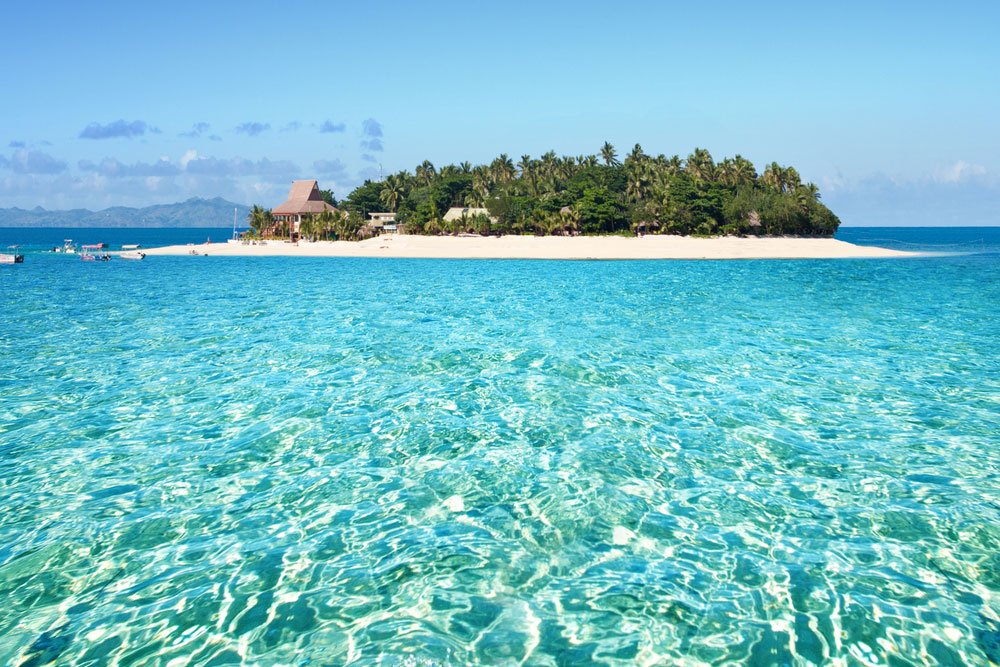The Historical Significance of the Sulu
The Sulu is a traditional garment worn in Fiji that reflects not only the rich cultural heritage of the islands but also the historical evolution of Fijian attire. The origins of the Sulu can be traced back to the early interactions between Fijians and European settlers, which led to the incorporation of various styles and fabrics into local clothing. Traditionally, the Sulu is a wraparound skirt, typically worn by both men and women, made from cotton or sometimes more luxurious materials like silk for special occasions. The Sulu serves as more than just a garment; it embodies the identity and values of Fijian culture. The fabrics often feature vibrant colors and intricate patterns that tell stories about the wearer’s family, social status, or even region. In particular, the Sulu is an essential component of ceremonial attire, marking significant life events such as weddings, funerals, and cultural festivals. This garment has become a symbol of pride and unity among Fijians, allowing them to express their cultural identity in a modern world. In New Zealand, where there is a significant Fijian diaspora, the Sulu can be seen in cultural festivals and community gatherings. New Zealanders with Fijian roots often wear the Sulu to maintain their cultural ties and showcase their heritage during events like the Pasifika Festival. For more information about Fiji’s cultural attire, visit Fiji Islands.Materials and Craftsmanship of the Sulu
The Sulu is notable for its diverse range of materials, which contribute to its versatility. Traditionally, the garment is made from lightweight cotton, ideal for Fiji’s tropical climate. The fabric is often dyed in vibrant colors, with patterns that hold cultural significance. In recent years, the introduction of synthetic materials has made the Sulu more accessible and affordable, but many still prefer the authenticity of natural fibers. Craftsmanship plays a crucial role in the creation of the Sulu. Many artisans take great pride in hand-making these garments, using techniques passed down through generations. The intricate designs and attention to detail reflect the skill and creativity of Fijian tailors. Some may even personalize their Sulus with unique motifs that represent their family lineage or personal stories. In New Zealand, workshops and cultural classes often offer the opportunity for individuals to learn about traditional Fijian garment-making. Engaging in such activities not only fosters a deeper appreciation for the craftsmanship involved but also strengthens community bonds. For insights into Fijian cultural attire, check out Fiji Islands.Modern Interpretations and Fashion Trends
In contemporary fashion, the Sulu has evolved beyond its traditional roots to become a versatile piece that fits various occasions. Designers have begun to reinterpret the Sulu, incorporating modern cuts, styles, and fabrics, making it a staple in both casual and formal attire. The garment is now often paired with contemporary tops, dresses, and even swimwear, allowing wearers to express their individuality while honoring their cultural heritage. Fashion shows and cultural events showcase the Sulu’s adaptability, featuring models wearing innovative designs that blend traditional elements with modern aesthetics. This trend has sparked interest among designers both in Fiji and internationally, leading to collaborations that promote Fijian culture on a global scale. In New Zealand, fashion enthusiasts can find local designers who incorporate Fijian elements into their collections. Many of these designers participate in fashion weeks and cultural celebrations, where the Sulu is often featured prominently. Such events not only highlight the versatility of the garment but also educate the public about the significance of Fijian cultural attire. To learn more about the Sulu and its modern interpretations, visit Fiji Islands.The Sulu in Ceremonial Contexts
The Sulu holds a prominent place in various Fijian ceremonies, symbolizing respect, tradition, and community. During significant events such as weddings, the Sulu is often worn by both brides and grooms, showcasing beautifully crafted garments that reflect their families’ heritage. The vibrant colors and intricate designs are carefully chosen to signify joy and festivity. In addition to weddings, the Sulu is a vital element in cultural festivals, funerals, and religious ceremonies, where it serves as a visual representation of one’s identity. For instance, during the meke dance performances, dancers often wear traditional Sulus, enhancing the cultural experience for both participants and spectators. New Zealand’s Fijian community continues to uphold these traditions, often organizing cultural events that feature traditional attire, including the Sulu. Participating in these ceremonies allows individuals to connect with their roots and share their culture with others. For further exploration of Fijian cultural attire and its significance, check out Fiji Islands.The Sulu as a Symbol of Identity and Pride
For many Fijians, the Sulu is more than just clothing; it is a powerful symbol of identity and pride. Wearing a Sulu evokes a sense of belonging and connection to one’s heritage. It serves as a reminder of the values instilled by ancestors and the importance of cultural continuity. The Sulu is often worn with pride during national celebrations, reinforcing a collective identity among Fijians. In New Zealand, the Sulu has become an emblem of cultural diversity and pride for the Fijian community. Many Fijians living abroad wear the Sulu during public events, festivals, and family gatherings, actively sharing their cultural identity with the wider community. This practice not only affirms their roots but also educates others about the richness of Fijian culture. Organizations and cultural groups in New Zealand play a vital role in promoting the significance of the Sulu, hosting workshops and events that encourage younger generations to embrace their heritage. Initiatives like these foster a sense of pride and ownership over cultural practices, ensuring that the tradition of wearing the Sulu continues for years to come. To learn more about the Sulu’s role in Fijian culture, visit Fiji Islands.Care and Maintenance of the Sulu
Proper care and maintenance of the Sulu are essential to preserve its beauty and longevity. Fijian Sulus, often made from delicate fabrics, require specific washing and storage practices to avoid damage. Most experts recommend hand-washing the Sulu in cold water with mild detergent to keep the colors vibrant and the fabric intact. Avoiding bleach and harsh chemicals is crucial, as they can degrade the material and fade the intricate patterns. After washing, it is advisable to hang the Sulu to dry in a shaded area, avoiding direct sunlight which can cause colors to fade. Ironing the Sulu on a low heat setting is recommended to remove wrinkles while ensuring the fabric remains in good condition. In New Zealand, where many Fijians engage in community events, sharing tips on Sulu care is common. Workshops often include demonstrations on how to maintain the garment, emphasizing the importance of preserving cultural attire. By taking good care of their Sulus, individuals can pass down these cherished garments to future generations. For additional resources on Fijian cultural attire, visit Fiji Islands.The Future of the Sulu: Cultural Preservation and Innovation
As the world becomes increasingly globalized, the future of the Sulu faces both challenges and opportunities. While modern fashion trends may lead to a dilution of traditional practices, there is also a growing movement among Fijian designers and cultural advocates to preserve the essence of the Sulu while innovating its design. This balance between tradition and modernity is crucial for maintaining the significance of the Sulu in contemporary society. Fijian artisans and designers are increasingly using sustainable practices and locally sourced materials to create Sulus that reflect both their cultural heritage and environmental consciousness. This approach not only honors traditional craftsmanship but also aligns with global trends toward sustainability in fashion. In New Zealand, cultural festivals and events provide platforms for Fijian designers to showcase their work, fostering a dialogue about the importance of cultural preservation. Engaging younger generations in these discussions encourages them to appreciate their heritage while also exploring innovative ways to express it. For more insights on the significance of the Sulu and Fijian cultural attire, visit Fiji Islands.FAQs
What is a Sulu?
A Sulu is a traditional garment worn in Fiji, typically consisting of a wrap-around skirt made from various fabrics. It is an essential piece of Fijian cultural attire, symbolizing the rich heritage and identity of the Fijian people.
How is the Sulu worn by men and women?
Men usually wear the Sulu as a knee-length wrap, often paired with a shirt, while women may wear it in longer styles that can reach the ankles or floor. Both genders can accessorize their Sulus with different colors and patterns to express individuality and cultural significance.
What occasions are appropriate for wearing a Sulu?
The Sulu is versatile and can be worn for various occasions, including cultural ceremonies, formal events, and casual outings. It is particularly significant during weddings, religious ceremonies, and traditional celebrations, where it reflects respect for Fijian customs.
What materials are commonly used to make a Sulu?
Sulusi can be made from a variety of materials, such as cotton, silk, or synthetic fabrics, depending on the occasion and personal preference. Traditional patterns, including tapa cloth designs, are often incorporated, showcasing the artistry of Fijian culture.
How does the Sulu reflect Fijian identity?
The Sulu is not only a garment but also a representation of Fijian identity and heritage. Wearing it signifies a connection to cultural roots and traditions, serving as a reminder of the values and history that shape the Fijian way of life.
Can tourists wear a Sulu, and how should they do it respectfully?
Yes, tourists are welcomed to wear a Sulu, particularly when attending cultural events or visiting local communities. To do so respectfully, tourists should choose appropriate styles, avoid overly casual or revealing combinations, and seek guidance from locals on proper wearing etiquette.
Are there any specific care instructions for maintaining a Sulu?
To maintain the quality of a Sulu, it’s important to follow care instructions specific to the fabric used. Generally, gentle washing in cold water, air drying, and ironing on a low setting are recommended to preserve the garment’s colors and patterns, ensuring its longevity for both everyday wear and special occasions.
References
- Fiji Islands Official Tourism Website – A comprehensive resource on Fiji’s culture and traditions, including insights into traditional garments like the sulu.
- ABC News – The Cultural Significance of the Sulu in Fiji – An article exploring the historical and cultural importance of the sulu in Fijian society.
- The Fiji Times – The Sulu: A Symbol of Fijian Identity – This piece discusses how the sulu represents Fijian identity and its versatility in different contexts.
- Fiji Culture – Understanding Fijian Identity Through the Sulu – An exploration of how the sulu reflects the broader aspects of Fijian culture and identity.
- ResearchGate – The Sulu in Fijian Culture – A scholarly article analyzing the role of the sulu in Fijian culture and its various adaptations over time.







